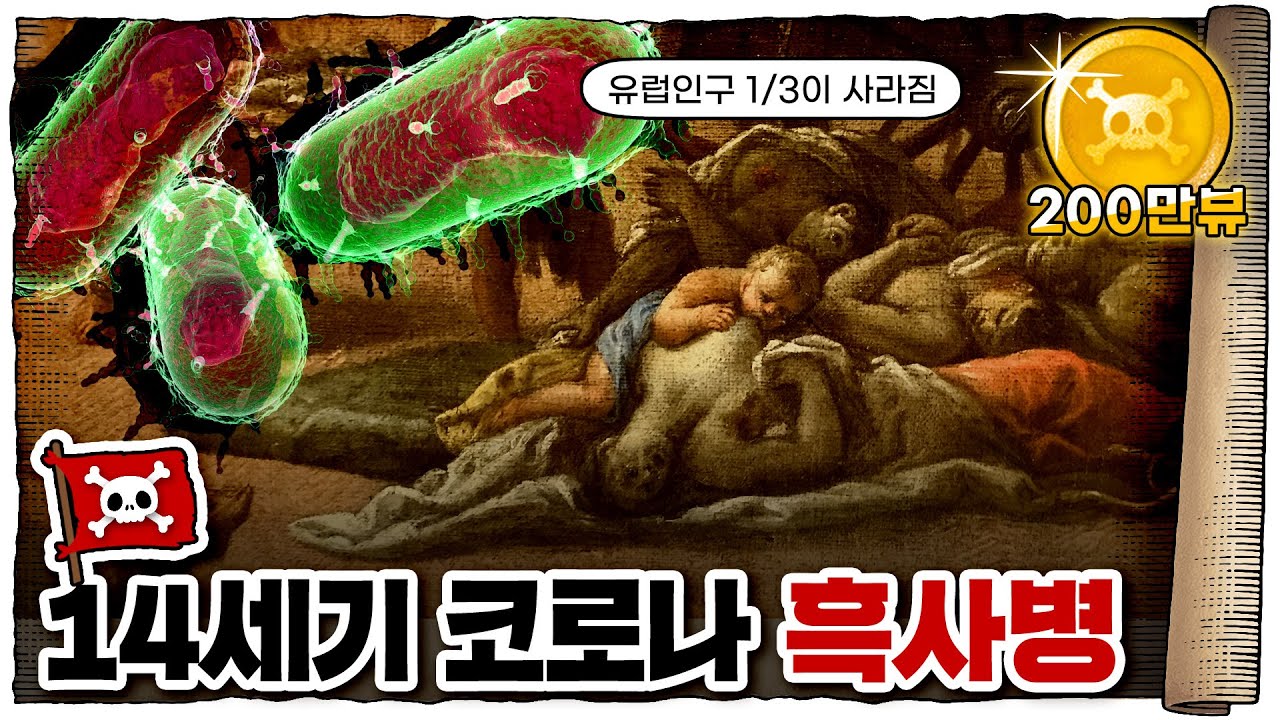What Made The Black Death (The Plague) so Deadly?
Summary
TLDRThe video script recounts the devastating arrival of the Black Death in Europe in 1347, detailing its swift spread and the catastrophic impact on populations. It explores the plague's origins, symptoms, and the lack of understanding of transmission methods during the time. The script also delves into theories about the role of fleas, particularly from rats, in spreading the disease and the ineffective medical treatments of the era. The summary concludes by pondering the ongoing debate about the true vectors of the plague and invites viewers to consider the possibility of a modern recurrence.
Takeaways
- 🚢 In October 1347, 12 ships carrying the Black Death arrived in Sicily, marking the beginning of the pandemic in Europe.
- 😷 The disease was characterized by blackened boils, fever, and often death, with symptoms appearing rapidly after infection.
- 🌏 Originating in Asia, the plague followed trade routes and quickly spread to Europe, the Middle East, and Africa.
- 🏥 At the time, there was a lack of understanding of disease transmission, leading to ineffective treatments and increased spread.
- 🐀 The Black Death is believed to have been spread by fleas, possibly from urban rats, although recent theories suggest human fleas and lice may have played a significant role.
- 🐑 The plague also affected livestock, leading to a shortage of wool and other resources, and devastating the economy.
- 📉 The death toll was staggering, with estimates ranging from 50 to 200 million people, representing a significant portion of the global population at the time.
- 🏙️ Entire villages and towns were depopulated, some eventually becoming overgrown with nature and forgotten until rediscovered in the 20th century.
- 🦠 The bacterium Yersinia pestis was responsible for the bubonic plague, and its high contagion rate contributed to the rapid spread of the disease.
- 🤒 The disease's incubation period allowed it to spread undetected, making isolation and containment extremely difficult.
- 💉 Common treatments like bloodletting and boil-lancing were not only ineffective but could also exacerbate the disease or lead to further complications.
Q & A
When did the Black Death first arrive in Europe?
-The Black Death first arrived in Europe in October of 1347, when 12 ships docked at a Sicilian port.
What was the initial reaction of the Sicilian authorities to the arrival of the Black Death?
-The Sicilian authorities, horrified by the sight of the diseased sailors, demanded the ships set sail immediately.
What symptoms did the Black Death typically present in its victims?
-Victims of the Black Death would develop blackened boils that dripped blood and pus, along with symptoms such as fever, pain, chills, sweating, upset stomach, and diarrhea, usually leading to death.
How did the Black Death spread so rapidly across Europe?
-The Black Death spread rapidly due to a lack of understanding of disease transmission, the highly contagious nature of Yersinia pestis, and its ability to be transferred through flea or lice bites.
What role did trade routes play in the spread of the Black Death?
-Trade routes played a significant role in the spread of the Black Death, as the disease seemed to follow these paths, moving from Asia to Europe and North Africa.
How did the Black Death affect the livestock population in Europe?
-The Black Death decimated livestock, leading to the death of countless pigs, cows, chickens, goats, and sheep, which in turn caused a shortage of wool throughout the continent.
What was the estimated death toll of the Black Death in Europe?
-Estimates place Europe's death total between 50 and 70 million people, which was around 30-60% of the population at the time.
What was one of the failed treatments attempted for the Black Death?
-Bloodletting was one of the treatments attempted for the Black Death, which involved cutting into veins or arteries to drain blood, but it was ineffective and may have even contributed to the patients' deaths.
How did the Black Death impact the genetic makeup of the surviving European population?
-The Black Death had a significant impact on the genetic makeup of the surviving population, as only 0.2% had a gene offering immunity, and the susceptible population did not pass on their genes, leading to a higher resistance in modern Caucasian Americans.
What is the alternative theory to the rat-flea model for the spread of the Black Death?
-An alternative theory suggests that human fleas and lice were the primary culprits behind the spread of the Black Death in Europe, with the disease being passed from person to person through bites.
What additional disease was discovered alongside the Black Death victims, potentially worsening the pandemic?
-Anthrax spores were discovered alongside the Black Death victims, suggesting that the presence of anthrax may have made the situation worse by adding another life-threatening disease to the mix.
Outlines

Esta sección está disponible solo para usuarios con suscripción. Por favor, mejora tu plan para acceder a esta parte.
Mejorar ahoraMindmap

Esta sección está disponible solo para usuarios con suscripción. Por favor, mejora tu plan para acceder a esta parte.
Mejorar ahoraKeywords

Esta sección está disponible solo para usuarios con suscripción. Por favor, mejora tu plan para acceder a esta parte.
Mejorar ahoraHighlights

Esta sección está disponible solo para usuarios con suscripción. Por favor, mejora tu plan para acceder a esta parte.
Mejorar ahoraTranscripts

Esta sección está disponible solo para usuarios con suscripción. Por favor, mejora tu plan para acceder a esta parte.
Mejorar ahora5.0 / 5 (0 votes)






